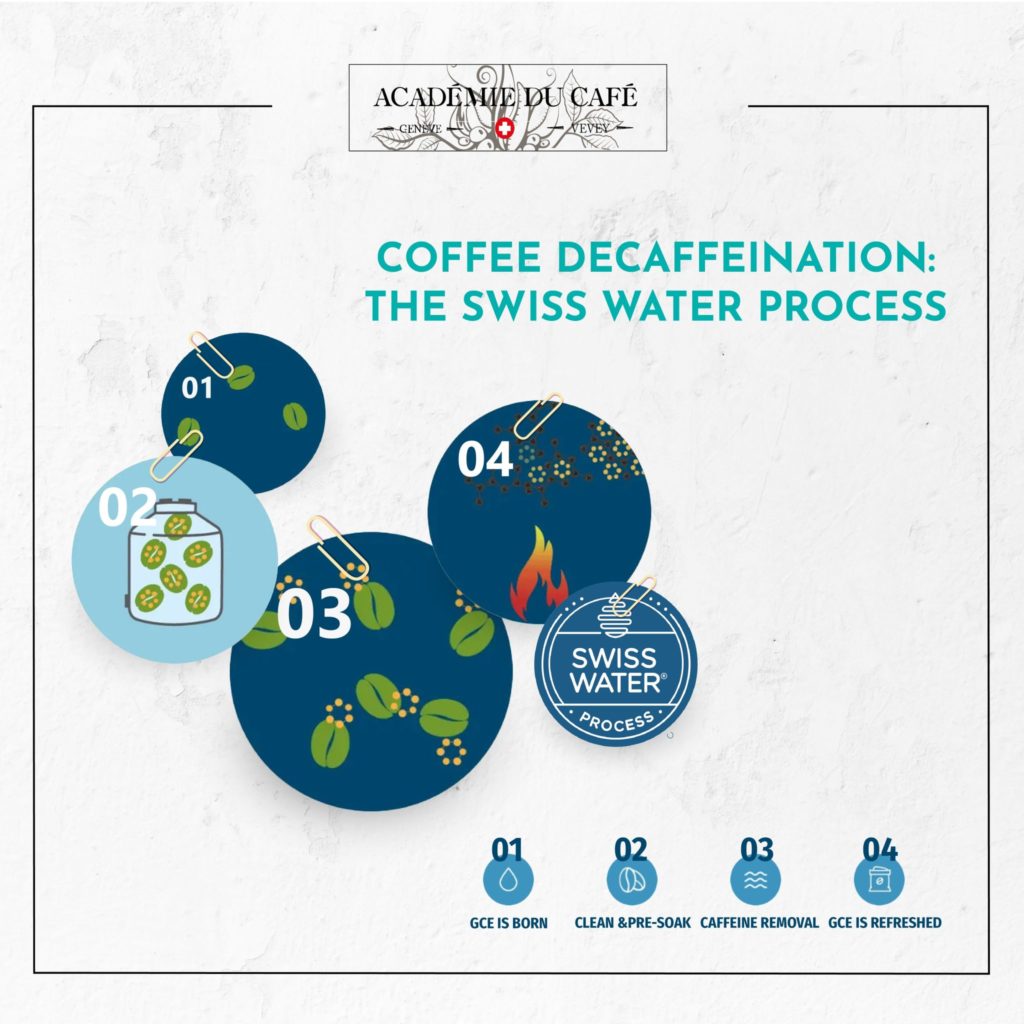
COFFEE DECAFFEINATION: THE SWISS WATER PROCESS
The term « Swiss » in the Swiss Water Process refers to the origins of the method, which was developed in Switzerland in the 1930s. Initially, it was conceptualized by a Swiss company called Coffex S.A., and the technology was patented in 1933. This method was revolutionary because it avoided the use of chemical solvents, which were commonly used in other decaffeination processes. The process was later perfected and commercialized in the 1980s by The Swiss Water Decaffeinated Coffee Company, which is actually based in Canada
Here’s a detailed explanation of this method:
- Green Coffee Beans Preparation: The process begins with green, unroasted coffee beans which are cleaned and hydrated with pure water to prepare them for caffeine extraction.
- Green Coffee Extract (GCE) Preparation: Simultaneously, a batch of green coffee beans is soaked in hot water, releasing caffeine as well as coffee’s soluble flavor compounds into the water. This mixture is then passed through a series of carbon filters to remove the caffeine, resulting in a caffeine-free but flavor-rich solution known as Green Coffee Extract (GCE).
- Caffeine Extraction via Osmosis: The main batch of hydrated green coffee beans is then immersed in the GCE. Since this extract is already saturated with the flavor compounds but lacks caffeine, the only direction for caffeine migration is from the beans into the extract. Osmosis drives this natural diffusion process where caffeine moves from a higher concentration (within the beans) to a lower concentration (in the GCE). This step is carefully monitored to maintain the integrity of the flavor profile.
- Continuous Monitoring and Adjustment: The GCE is continuously circulated through additional carbon filters to strip away the extracted caffeine. This filtration process is repeated until the coffee beans are 99.9% caffeine-free.
- Drying: After the decaffeination process, the beans are removed from the GCE, rinsed, and dried. They are now ready to be roasted and brewed, maintaining most of their original flavor and aroma characteristics.
This decaffeination method can be organic certified.